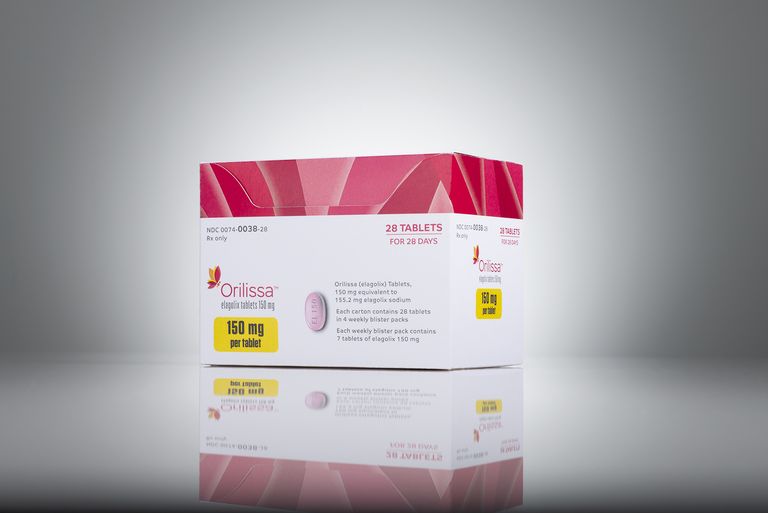
A new endometriosis treatment will be on the market soon—and it’s the first one in more than 10 years.
Orilissa, created by the drug company Abbvie, was recently approved by the FDA to treat moderate to severe pain caused by endometriosis, according to the Associated Press (AP). It’s the first FDA-approved oral treatment for the condition in over a decade.
“Orilissa represents a significant advancement for women with endometriosis and physicians who need more options for the medical management of this disease,” said Michael Severino, M.D., executive vice president of research and development and chief scientific officer of Abbvie in a statement by the company.
Remind me again, what is endometriosis?
Endometriosis is a condition in which the tissue that lines the uterus (a.k.a. the endometrium), also grows in other places in the body, like the ovaries, fallopian tubes, vagina, or bladder. In even rarer cases, the tissue can grow in other places, like the lungs, according to the National Institute of Child Health and Human Development.
It’s also extremely painful—the main symptoms of endometriosis are often debilitating pain during menstruation, bowel movements and urination, and sex, as well as infertility, per the NICHD.
It’s fairly common too, affecting about about 11 percent of women ages 15 to 44 in the U.S., according to the U.S. Department of Health and Human Services. (That’s about one in 10 people!) It can happen in any woman, but it’s most common in those in their 30s or 40s.
And, while Orilissa is the first FDA-approved endometriosis treatment in more than 10 years, it’s not the only one on the market. Currently, hormonal birth control (including IUDs that release hormones) and over-the-counter pain meds can help manage symptoms, while some women may also need hormone-suppressing drugs or surgery.
So, what is Orilissa and how does it work?
Orilissa’s an oral treatment that comes in two different doses—one 150-milligram pill once a day, and one 200-milligram pill twice a day, according to Abbvie’s news release.
Orilissa is a gonadotropin-releasing hormone antagonist (the first of its kind, according to the press release), which basically means that it stops your body from making hormones that lead to ovulation, your period, and the growth of endometriosis itself. It puts you in a sort of menopausal state, according to the U.S. Department of Health and Human Services, and controls growth of your endometrial tissue. It also means your body makes less estrogen. Once you go off the treatment, however, your menstrual cycle (and, ultimately pain from endometriosis) can return.
The FDA gave the go-ahead on the med after seeing results of two studies involving nearly 1,700 women. The findings showed that Orilissa reduced pain during daily menstruation, non-menstrual pelvic pain, and pain during intercourse, according to the news release. The researchers recommend taking either a 150-mg daily dose for two years or a 200-mg twice-daily dose for up to six months.
Like most meds, Orilissa does have side effects. The most serious one is a decrease in bone mineral density (aka weaker bones), due to the decrease in estrogen levels—and the risk increases the longer you take the drug. There is also a risk of suicidal thoughts, actions, or behavior, according to Abbvie.
Other side effects are pretty similar to those experienced during menopause: Hot flashes, night sweats, and mood changes, among others, according to Abbvie.
Okay, so how do I get Orilissa?
It’s available via prescription—but not just yet. The drug’s expected to hit pharmacies in August 2018. Buuuut that doesn’t rule out talking to your ob-gyn about it now, if you’re interested.
Ultimately, Orilissa is just one line of defense against endometriosis—which often involves women trying various treatments to find one that works for them.
“Women with endometriosis may undergo multiple medical treatments and surgical procedures seeking pain relief,” said Hugh S. Taylor, M.D., study investigator and Chair of the Department of Obstetrics, Gynecology and Reproductive Sciences, Yale School of Medicine. “This approval gives physicians another option for treatment based on a woman’s specific type and severity of endometriosis pain.”
Source: Read Full Article
